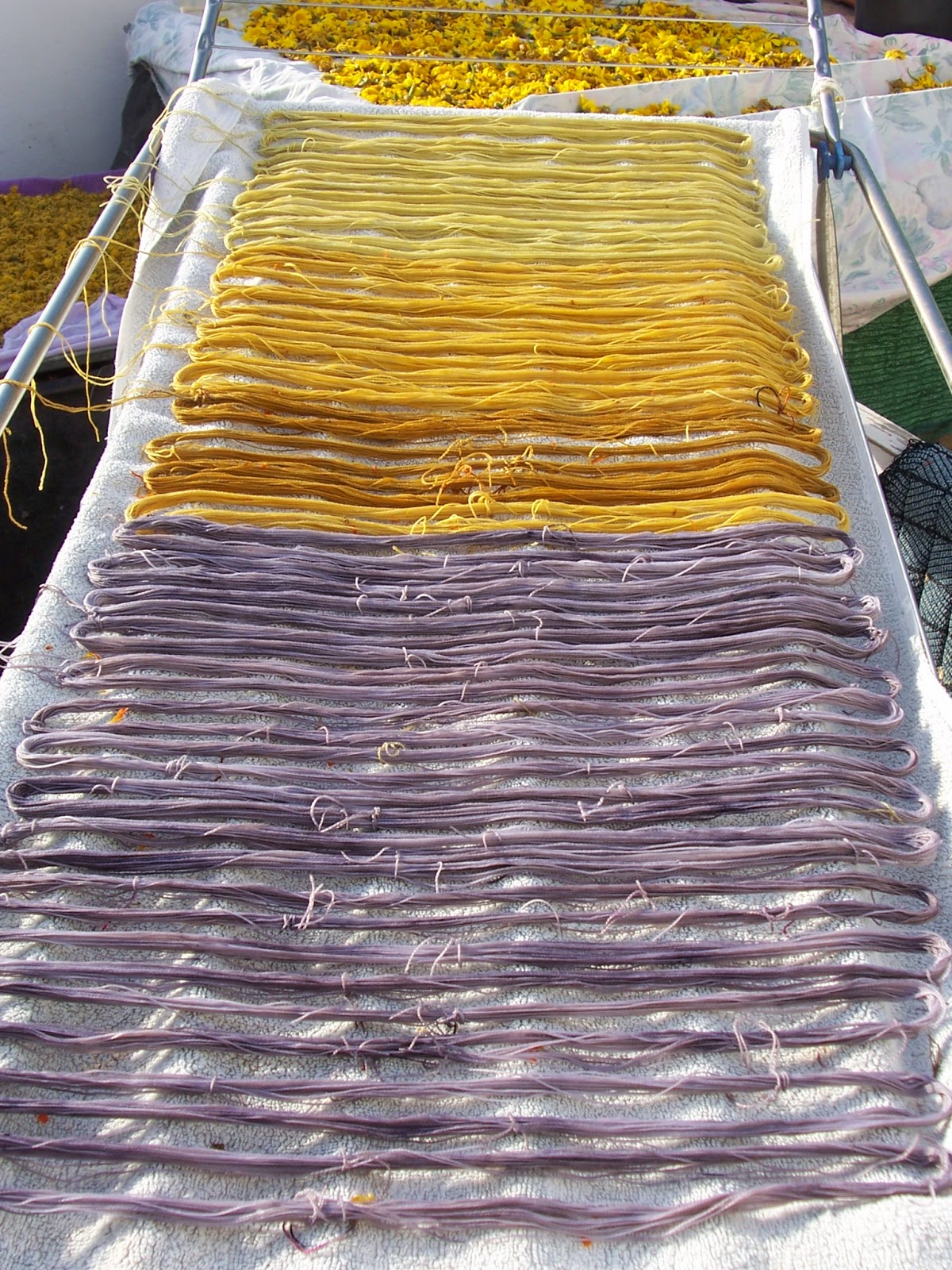However we managed to find wild madder, rubia peregrina, growing up the walls as a weed next to the mangos in the plot where we grow vegetables.
 | ||
| Rubia peregrina creciendo en la huerta aquí en Almuñécar. |
The problem is that you use the roots so we carefully dug up a patch. They weren't very deep and now having dyed with them perhaps we should have dug deeper.
Back at home I quickly washed off most of the earth and chopped them up before they went hard, put them out to dry for a few days and then forgot about them.
 |
| Las raíces cortadas secándose |
This weekend I got them out. I washed them twice quickly in hot water to wash off the dye colours which I didn't need and then put them to soak for an hour or two out in the sun where this weekend it was very hot. The water which I rinsed off I kept and that dyed some cotton threads, with no mordant, a very pretty, pale pink.
I poured off the dye and then added some silk, cotton and cotton threads, all of which had been previously mordanted, and left them all in the sun for the day.
The results were a bit of a surprise. For some reason I'd been expecting red??? The silk came out a beautiful soft coral and so did the threads. The cotton fabric was ok but really needs to be redyed.
 |
| Los resultados: Seda y hilos con mordiente. Tonos de rosa pálida en los hilos sin mordiente. |
The photo's not very good but gives an idea of the colour. The pale pink is lovely and a nicer shade than I get from cochineal.
I kept the dye after I'd taken everything out and the next day added the madder back into it and some mordanted threads and put the whole thing back up on the roof for two days. It really is hot here at the moment, almost 28 degrees, so the pan heated up very well during the day.
 | |||
| Hilos con mordiente en el tinte con la rubia en el segundo baño. Lo he dejado en la terraza en el sol para dos días. |
And here are the results, ready to be sold in my etsy shop.
It's Wednesday today and tomorrow I'm off to Ireland for the weekend and I'm going to leave a few more skeins of thread, without any mordant, in the pot to see what happens to them.
During the winter I did manage a couple of composting experiments with tiny bits of madder, pomegranate rinds and leftover cochineal. You can see the faint streaks from the madder.
 |
| Rubia, granada y cochinilla teñido con un método de compost. |
Interesting experiments. I'm sure the colour could be stronger by using more, or digging deeper and finding thicker roots. I still have some more left and eventually I'll be able to harvest my own plant. I think it's about to flower so I'll be able to collect the seeds and start the whole cycle again.
Like the woad it's a long process.



































